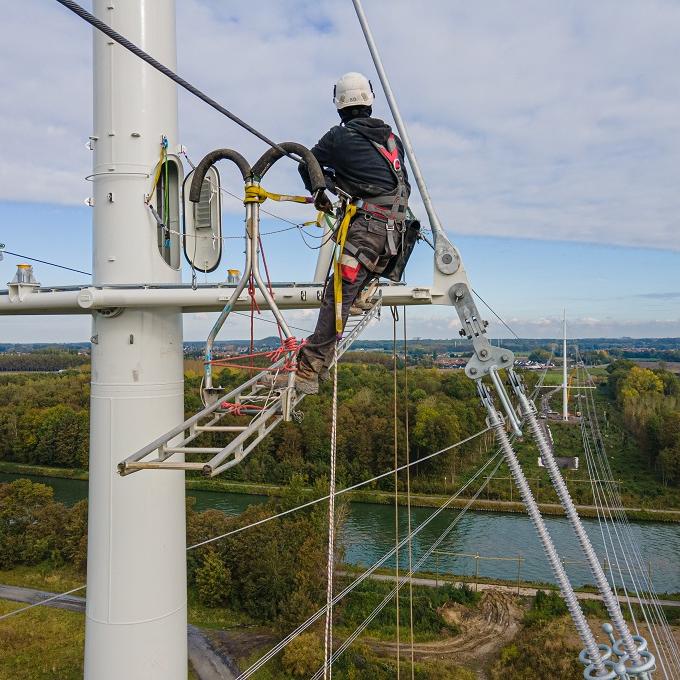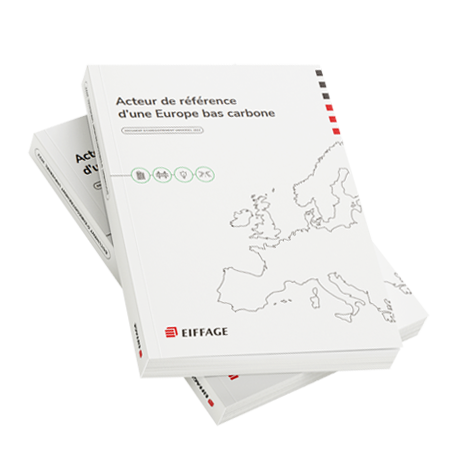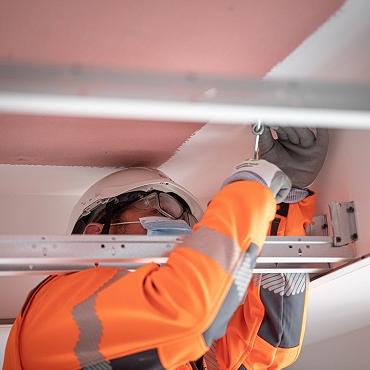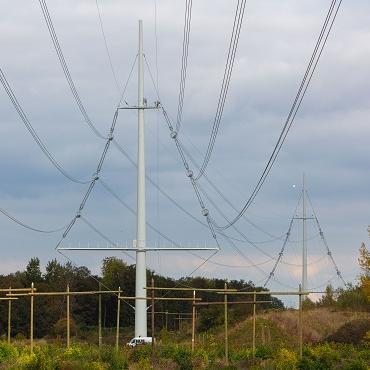Occupational safety and risk prevention are priority objectives for the Eiffage Group. The whole Eiffage Group, including Eiffage Énergie Systèmes, aspires to zero-risk operation.
Risk prevention at worksites
Eiffage Énergie Systèmes is particularly attentive to workplace health and safety. A safety and occupational accident prevention policy has therefore been implemented, involving all employees, with particular focus on commitments by the management hierarchy.
Key principles of this policy :
- All employees, regardless of management grade, have a shared duty to keep people safe.
- Anticipating and preventing risks is an integral part of routine management
- We must enhance employees’ behaviour and competency by providing information and training about risks associated with their activity
- We must analyse incidents and accidents to prevent them from recurring or becoming normalised.
A single goal – zero-accident operation

Eiffage Énergie Systèmes has set a single, unambiguous goal: achieve zero-accident operation. This objective is stated in the Eiffage Group Charter of Values and Mission Statement.
In order to achieve this ambitious goal, Eiffage Énergie Systèmes develops and issues employees with risk prevention tools to decrease accident risks. These tools relate to worksite preparations, human resources and equipment, training, awareness-raising initiatives, qualification programmes and risk prevention initiatives (including management safety inspections, accident assessments, “15-minute safety briefings” and accident debriefing interviews).
Eiffage Énergie Systèmes entities regularly win awards in the annual safety competition organised by the associations SERCE and OPPBTP.
The Commitment Charter and Six Essential Points
At Eiffage Énergie Systèmes, our goal is to be an industry leader in risk prevention in each of our specialities. To this end, new common guidelines have been produced, in the form of a Commitment Charter signed by the Energy Division’s Executive Committee. The charter, setting out “12 progress areas”, aims to encourage managers to make safety a constant priority. Nothing has been overlooked in this charter, which covers everything from on-boarding to sharing best practices, worksite preparations, pre-job safety briefings, shift handovers and fair, reasoned sanctions in response to repeated intentional infringement of the stated requirements. The charter is based on extensive consultations with all risk prevention stakeholders (including regional managers, subsidiary managers, risk prevention coordinators and health and safety committee representatives) and is informed by a benchmark of good practices applied by customers and other industry stakeholders.
All employees are asked to familiarise themselves with the “Six Essential Points” relating to safety and risk prevention. These Six Essential Points – informed by a decade of occupational accident assessments as well as the baseline in the Eiffage Énergie Systèmes Strategy Plan – were established as essential guidelines that must be upheld in order to work safely. They relate to lockout procedures; collective protection; personal protection; moving machinery, vehicles and loads; safety harnesses and signage and markings.
In upholding the Commitment Charter and Six Essential Points, we are doing everything possible to adopt and encourage others to adopt good safety practices. We have a zero-tolerance attitude in this area, considering that your life may depend on it.
The easy app
Accompanying the benchmark Six Essential Points, the Easy application provides an interface for sharing risk prevention information relating to our projects.
Developed in 2017, Easy is a web and mobile application that optimises data processing and facilitates action plan reporting.
During management safety inspections, nonconformities and deviations, hazardous condition notifications and corrective action monitoring information are logged in the app and instantly transferred to management and the risk prevention coordinator. An action plan is then produced via the application, consisting of actions and associated deadlines, enabling corrections to be implemented via Who/What/When instructions.
With a new version of the app, it is possible to conduct 15-minute safety briefings directly in the app.
Available to download to smartphones or tablets and accessible to PC users, Easy is “open” to anyone who performs management safety inspections or 15-minute safety briefings, or provides feedback on best practices or hazardous conditions.





